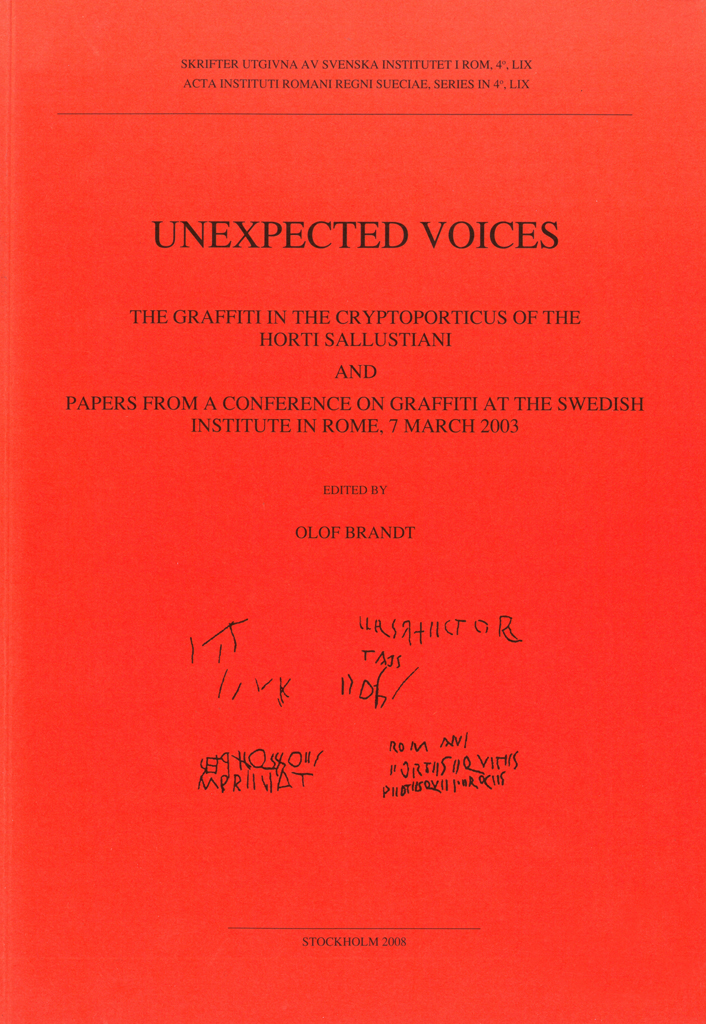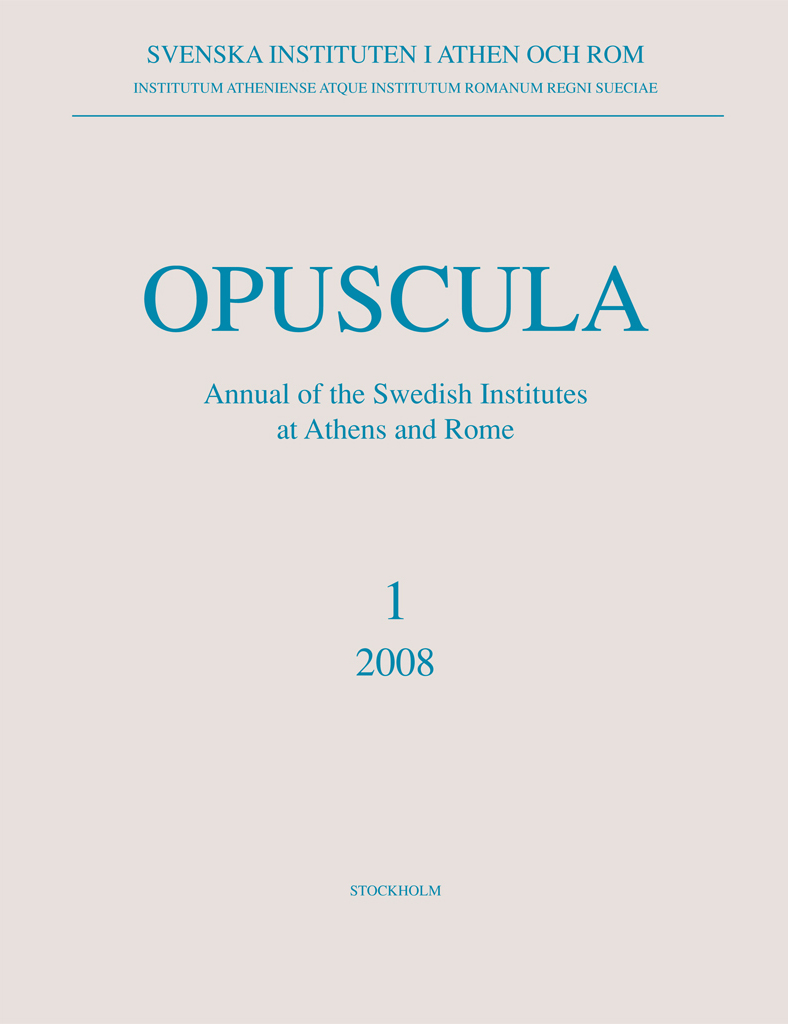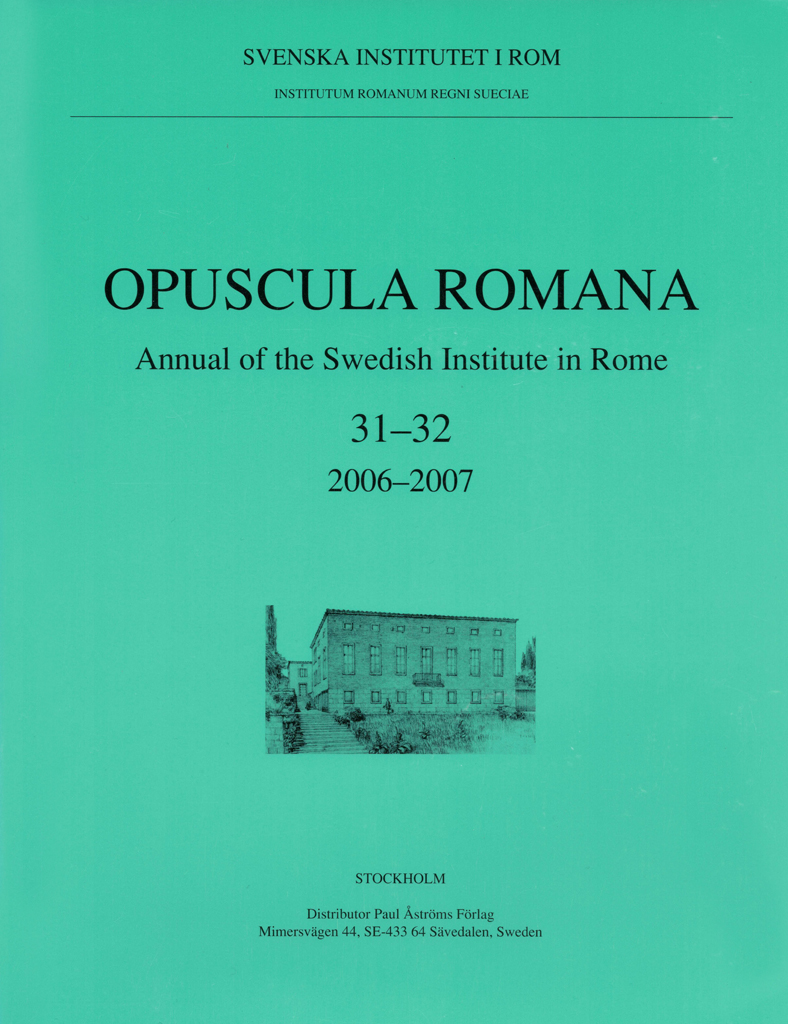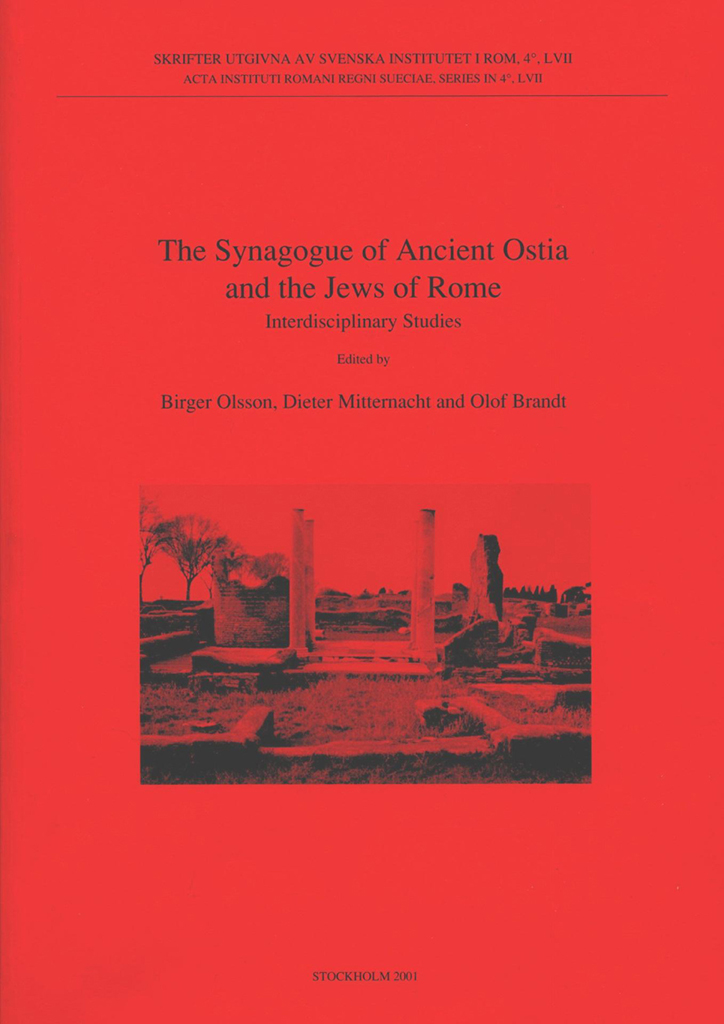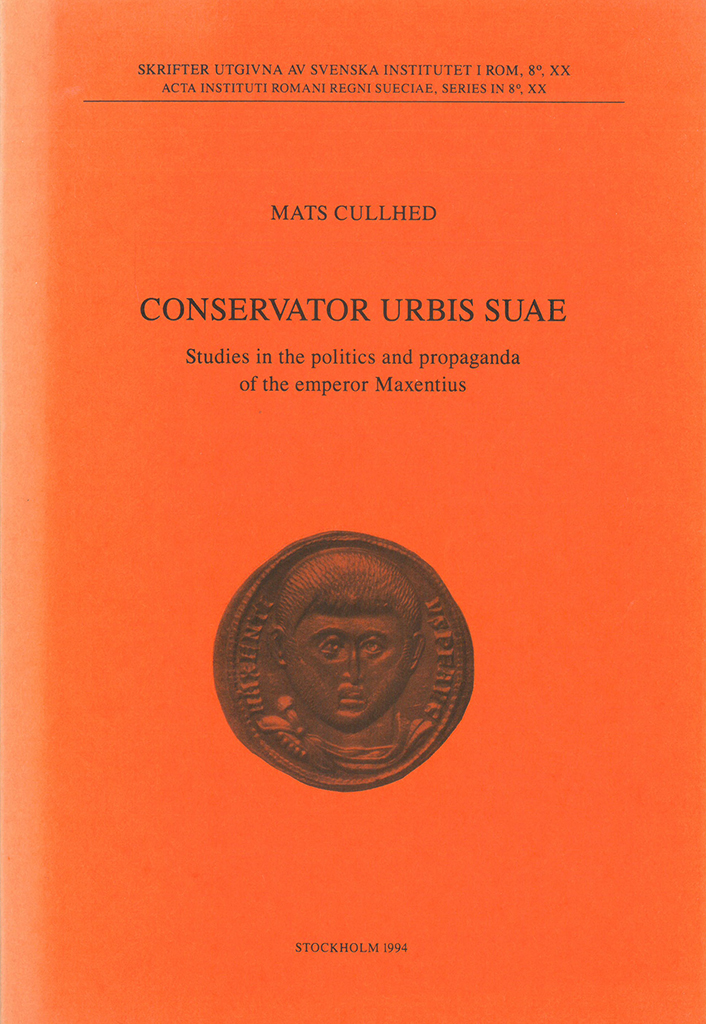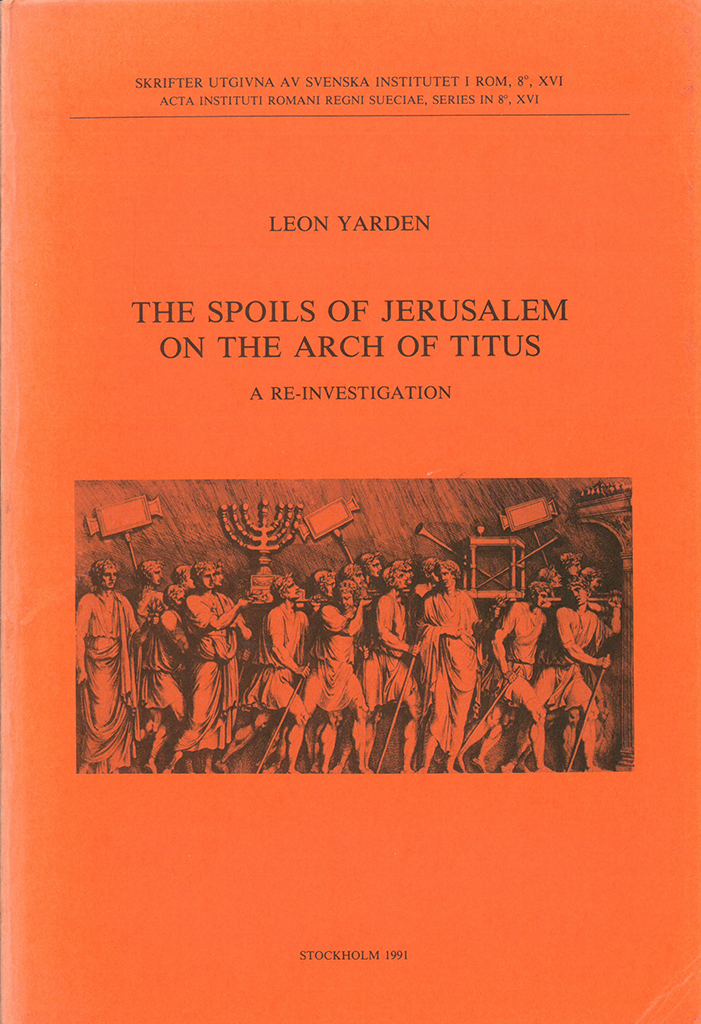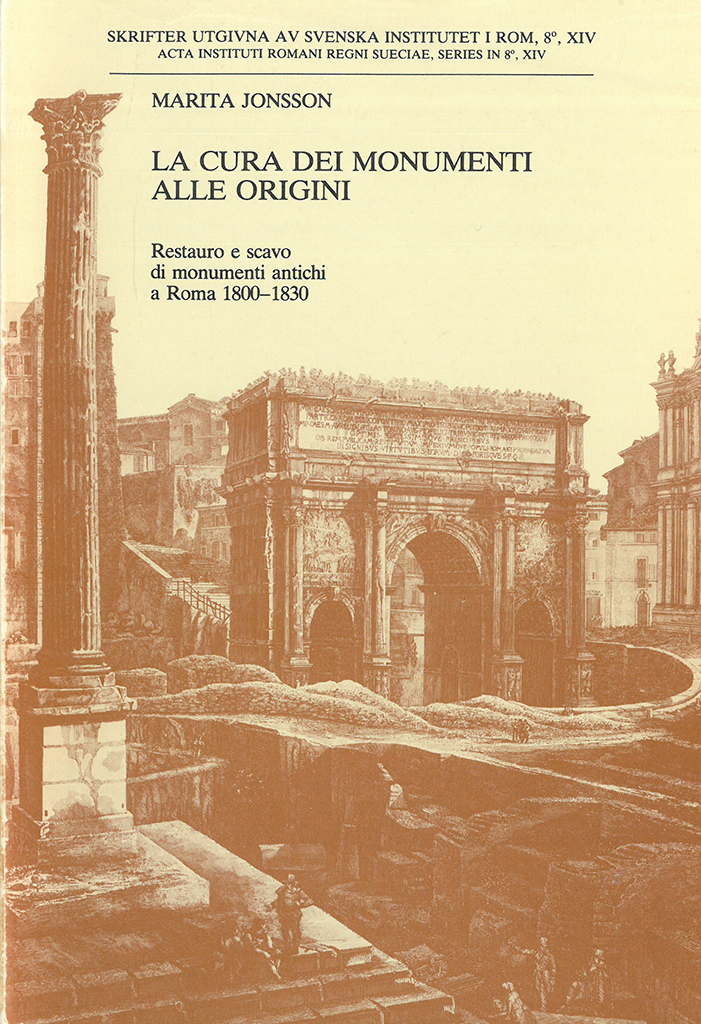Now available for purchase at Amazon.com, Amazon.de, Bokus.com, Adlibris.com. Distributed by Eddy.se AB. Unexpected voices. The graffiti in the cryptoporticus of the Horti Sallustiani and papers from a conference on graffiti at the Swedish Institute in Rome, 7 march 2003 By Olof Brandt (ed.) This volume presents the results of a collaboration between the Swedish Institute in Rome and the Embassy of the United States of America in Rome. The object of the research was a cryptoporticus, part of the ancient Horti Sallustiani, in the area of the American Embassy, and especially the graffiti found on the walls of the cryptoporticus, which were also decorated with paintings. The cryptoporticus, which is dated to the first century AD, was excavated in 1949–1950 and in the 1990s, but the graffiti have never been completely published. In this publication, all the graffiti are discussed and dated. Some belong to Late Antiquity, others were made in the 16th and 17th centuries. The study of these graffiti gives important information about the later fate of the first-century cryptoporticus. Several unpublished fragments of wall-paintings are also presented, and more general historic and archaeological aspects of the cryptoporticus are discussed. Part of the project was the first…
Opuscula 1 (2008) is out of print. Available for free download at Bokorder.se. Used copies might be available at Amazon.com and Amazon.de. I muri trasversali di Santa Croce in Gerusalemme e la sinagoga di Ostia By Olof Brandt Abstract The reasons behind the unusual internal division of the first phase of the church of Santa Croce in Gerusalemme have never been fully explained. This paper proposes an explanation of the phenomenon with the help of a comparison with the Synagogue of Ostia Antica. Bibliographical information Olof Brandt, ‘I muri trasversali di Santa Croce in Gerusalemme e la sinagoga di Ostia’, Opuscula. Annual of the Swedish Institutes at Athens and Rome (OpAthRom) 1, 155–166. Stockholm 2008. ISSN: 2000-0898. ISBN: 978-91-977798-0-7. Softcover, 198 pages. https://doi.org/10.30549/opathrom-01-12
Now available for purchase at Amazon.com, Amazon.de, Bokus.com, Adlibris.com, and Bokorder.se. Contents Johnny R. Bengtsson | Late Bronze Age handles from the Apennine settlement at Luni sul Mignone: Some chronological observations Ingela M.B. Wiman & Yvonne Backe-Forsberg | Surfacing deities in later Etruscan art and the sacellum at San Giovenale Allan Klynne | The Villa Selvasecca revisited John W. Hayes | Villa Selvasecca: the pottery finds Ebba Engström & Ragnar Hedlund | Villa Selvasecca: the coins Dominic Ingemark | Villa Selvasecca: the glass Anne-Marie Leander Touati | Interim report of the Swedish Pompeii Project: Work 2000–2004/5 in Insula V 1. Introduction Margareta Staub Gierow | The House of the Greek Epigrams V 1,18.11–12: preliminary report 2000–2004 Arja Karivieri & Renée Forsell | The House of Caecilius Iucundus, V 1,22–27: a preliminary report Henrik Boman & Monica Nilsson | The commercial establishments V 1,13; V 1, 14–16; V 1,20–21: preliminary report 2001–2004 Mark Robinson | Evidence for garden cultivation and the use of bedding-out plants in the peristyle garden of the House of the Greek Epigrams (V 1, 18i) at Pompeii Henrik Boman & Monica Nilsson | The early street and the prehistoric finds in Vicolo delle Nozze d’Argento, Pompeii Jörg…
The urban transformation of medieval Rome, 312–1420 By Torgil Magnusson. Published by the Swedish Institute of Classical Studies in Rome. Distributed by Astrom Editions. Bibliographical information Torgil Magnusson, The urban transformation of medieval Rome, 312–1420 (Suecoromana. Studia artis historiae instituti romani regni Sueciae 7), Stockholm 2004. ISBN 978-91-7042-167-9, ISSN 1102-7940. Hard cover: 162 pages.
Distributed by Astrom Editions. The Synagogue of Ancient Ostia and the Jews of Rome. Interdisciplinary Studies Edited by Birger Olsson, Dieter Mitternacht & Olof Brandt In March of 1997 a research project on the ancient synagogue began at Lund University, Sweden, continuing a tradition of research that has its roots in the 1930s. The project’s title “The Ancient Synagogue: Birthplace of Two World Religions” suggests that Judaism and Christianity existed for a time in close proximity to each other and were shaped by the same particular milieu within the ancient world, namely, the synagogue. The synagogue in ancient Ostia was chosen as an initial case study, since there is evidence that it was built during the first century CE and consequently is one of the earlier synagogues in the Roman world to have been excavated. Olof Brandt presents for the first time a more extensive description of the area outside the city walls where the synagogue was built. Anders Runesson surveys all the material that has been published about Ostia in order to make a new reconstruction of the synagogue’s history in Ostia. Magnus Zetterholm attempts, primarily with the aid of interpretative theories and general considerations, to sketch the relations…
Distributed by Astrom Editions Conervator urbis suae. Studies in the politics and propaganda of the emperor Maxentius Mats Cullhed The Roman emperor Maxentius (A.D. 306–312) has usually been seen as a usurper, who sought, but never gained recognition from the other rulers of the Tetrarchy. Maxentius’ reign has been considered a political failure. These studies are an attempt at re-evaluating Maxentius’ politics, as they can be reconstructed from his propaganda, for example, coins and architectural monuments, and from information in the literary sources, above all Lactantius. Interpreting this material within the context of the political realities of the early fourth century and with the aid of modern research on the Principate leads to the conclusion (a) that Maxentius could claim, by means of different criteria, that he was a legitimate ruler, (b) that he never wanted to enter the Tetrarchy, and (c) that he aspired to supreme power for himself. His main weapon of propaganda against his competitors was the city of Rome, where he resided. His position there was a challenge to the Tetrarchy’s decentralized power structure and served to undermine the concord of the tetrarchs. Bibliographical information Mats Cullhed, Conervator urbis suae. Studies in the politics and propaganda…
Published by the Swedish Institute of Classical Studies in Rome. Distributed by Astrom Editions. The spoils of Jerusalem on the Arch of Titus. A re-investigation By Leon Yarden Abstract Leon Yarden published his doctoral thesis in a revised form under the title The tree of life (London 1971). Its subject was the menorah (seven-branched lampstand) depicted on the Arch of Titus in Rome as a part of the spoils from the destruction of the Temple in Jerusalem by the Romans in A.D. 70. The present book forms the continuation and completion of this work on the relief and covers not only the menorah but also the other ritual objects depicted with it – the ceremonial table, the two receptacles on the table and the two trumpets attached to the table. Dr. Yarden made a comprehensive study of the relief in situ in the summer of 1975, and this was supported by a photogrammetric survey made by Mr. C.-O. Jonason, of the Department of Photogrammetry at the Royal Institute of Technology in Stockholm. The purpose of this study was (1) to establish the precise appearance of the ritual objects today, (2) to gain as closely as possible a notion of their…
Published by the Swedish Institute of Classical Studies in Rome. Distributed by Astrom Editions. Opuscula Romana 16 Contents Giovanni Colonna, ‘Il maestro dell’Ercole e delle Minerva. Nuova luce sull’attività dell’officina veiente’, pp. 7–41. Ingrid E.M. Edlund, ‘The sacred geography of southern Italy in Lycophron’s Alexandra’, pp. 43–49. Harry Erkell, ‘Varroniana III. Studi topografici. – Il culto all’Ara Maxima. Varro, De lingua latina V §§ 51–54 e VI § 54’, pp. 51–57. Erik J. Holmberg, ‘The Red-Line Painter’, pp. 59–90. Erik Nielsen, ‘Some preliminary thoughts on new and old terracottas’, pp. 91–119. Gad Rausing, ‘Charcoal, wheat and history’, pp. 121–124. Jocelyn Penny Small, ‘Left, right, and center: direction in Etruscan art’, pp. 125–135. Örjan Wikander, ‘Senators and equites. II. The aristocracy as agents of production’, pp. 137–145. Charlotte Wikander, Örjan Wikander & Giovanni Colonna, ‘An Etruscan inscription from Acquarossa’, pp. 147–148. Sebastian P.Q. Rahtz, ‘The Protestant Cemetery, Rome. A study undertaken under the auspices of the Unione Internazionale degli Instituti di Archeologia, Stora e Stora dell’arte in Roma. Interim report’, pp. 149–167. Carl Nylander, ‘The Swedish Institute in Rome (founded 1926). Report for the academic years 1984/85 and 1985/86’, pp. 169–171. ‘Guide for contributors to Opuscula Atheniensia and Opuscula Romana’, pp….
Published by the Swedish Institute of Classical Studies in Rome. Distributed by Astrom Editions. La cura dei monumenti alle origini. Restauro e scavo di monumenti antichi a Roma 1800–1830 Translated title: The beginnings of the preservation of monuments—the uncovering and restauration of ancient monuments in Rome 1800–1830 By Marita Jonsson Abstract Throughout the ages buildings have been maintained. When necessary, improvements have been made, alterations have taken place, new functions have been allotted. During the nineteenth century, buildings began to be restored with the sole purpose of preserving them for the future. France has been considered a leading country in this respect, and with the restoration architect Eugène Viollet-le-Duc a number of so-called style restorations started with the purpose of recreating the buildings in the style in which they were considered to have been built originally. At the beginning of the nineteenth century, preservation of monuments in Rome took a different direction to what became dominant in Europe during the latter part of that century. In Rome the primary aim was to keep the buildings in a good state of repair by simple means. The repairs were often carried out in materials that differed from the original, and were in…
Bread for the people. Studies of the corn-supply of Rome during the Late Empire By Emin Tengström. Published by the Swedish Institute of Classical Studies in Rome. Distributed by Astrom Editions. Bibliographical information Emin Tengström, Bread for the people. Studies of the corn-supply of Rome during the Late Empire (Skrifter utgivna av Svenska Institutet i Rom, 8°, 12), Stockholm 1974.

